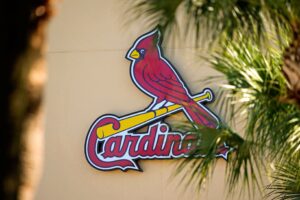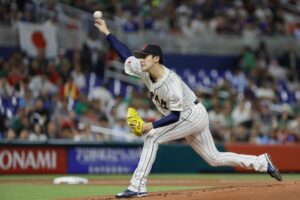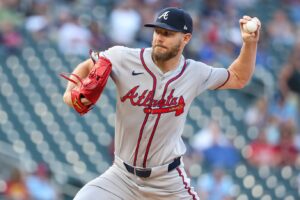Christopher Morel of the Tampa Rays, formerly with the Chicago Cubs, has put together a disappointing 2024 season. By WAR, he has been one of the worst players in baseball among qualified players. The glaring warts on the defensive side have been well-documented and will continue to be an issue. However, the thesis for Morel was that his offensive production would compensate for the lack of defensive ability. That simply has not been the case as he sits at a poor 81 wRC+ for the season. Let’s dive into some possible explanations for his offensive struggles including his approach and batted ball profile.
Reasons Behind Christopher Morel’s Disappointing Season
Approach
Coming into this season, Morel held over a 30 percent strikeout rate in his first two years with the Cubs. He counteracted his swing-and-miss with excellent hard hit-and-barrel rates. Another positive sign that Morel has consistently displayed is that his chase rate is not too high. This combination of skills provided a foundation to build on, potentially leading to an improved approach.
For the first two months of the season, Morel looked to be putting all the pieces together and primed to break out at any moment. However, the surface-level stats did not fully reflect this, as he held a below-average 93 wRC+. Positively, his process improved vastly as he cut his strikeout rate to a league average of 22.7% and raised his walk rate to 12.3%. The ideal combination of striking out less and walking more raises the floor of any hitter. Combining this with his typically great batted ball quality, Morel was underperforming his expected results. Here are his actual statistics and expected statistics for March through May:
| BA | .198 | xBA | .263 |
| SLG | .376 | xSLG | .503 |
| wOBA | .299 | xwOBA | .377 |
Morel’s improvements in these two months could also be supported by better swing decisions, better whiff rate, and continuing to hit the ball hard. One element that will immediately stand out for Morel in this early season stretch is his .208 BABIP which was third lowest among qualified hitters. This can explain away a lot of offensive struggles for some hitters as it tends to normalize over a long season. It is important to consider contextual factors contributing to a lower BABIP. A hitter with a fly ball rate north of 50% would project a lower BABIP than average and not be considered bad luck. In Morel’s case, it could be something worth noting.
Batted Ball Profile
Morel experienced normal BABIP fluctuation in his first two big league seasons hovering above and around the standard .300 mark. Over the course of the full 2024 season, that number has cratered to .230. The batted ball distribution is not drastically different from previous seasons. One key difference, though, is his infield fly ball rate jumping to 18% after being at 7.7% and 12.8% the last two seasons. This mark is the 5th highest rate in the league and is a big contributor to a lower BABIP. These plays are as good as strikeouts as they rarely fall for hits.
A part of Christopher Morel’s game that has been a constant since he came to the big leagues has been a pull-happy approach. Since entering the league in 2022, Morel is in the top 20 of all hitters in batted balls to the pull side. Pulled fly balls are the most productive batted ball type possible and pulling the ball is a solid start. However, Morel’s pull happiness has not fully translated when it comes to fly balls. More than 70% of Morel’s fly balls have been to the center or the opposite field this season. His distribution on his barreled balls is a bit more favorable, with 38.5% of them going to the pull side.
The direction distribution of a player’s batted ball profile is an important consideration to pay attention to. Here are the league-wide splits on how fly balls perform depending on the direction for this season:
| Pull% | Center% | Oppo% | |
| AVG | .408 | .181 | .125 |
| SLG | 1.409 | .483 | .289 |
| wRC+ | 392 | 71 | 4 |
Full Picture
Christopher Morel looked like a positive regression candidate for most of the season. Many of his process metrics and his contact quality appeared very good. While he had a few temporary moments of getting hot, it never came together for Morel this season. Some of his improvements in the early part of the season faded as the year progressed. From June 1st until the end of the season, his strikeout rate crept back to nearly 30%, along with his whiff rate spiking. Even the contact quality came down from his prior years. His defensive struggles, combined with not putting the tools together offensively, led to him being dealt at the deadline from the Chicago Cubs to the Tampa Bay Rays.
Changes of scenery often prove to be a blessing for players and landing in a formidable organization like the Rays could do wonders. This did not prove to be the case as Morel’s offensive struggles continued even more so after the trade. Morel’s bad swing-and-miss habits reared its head significantly as he neared a 40% whiff rate. With him as the centerpiece of the Isaac Paredes deal, Morel should get full a run of opportunity next season to sort things out. There is no doubt about his potential with the stick. When he gets white hot, Christopher Morel is one of the more electric players in baseball.
Main Photo Credits: Jonathan Dyer-Imagn Images






